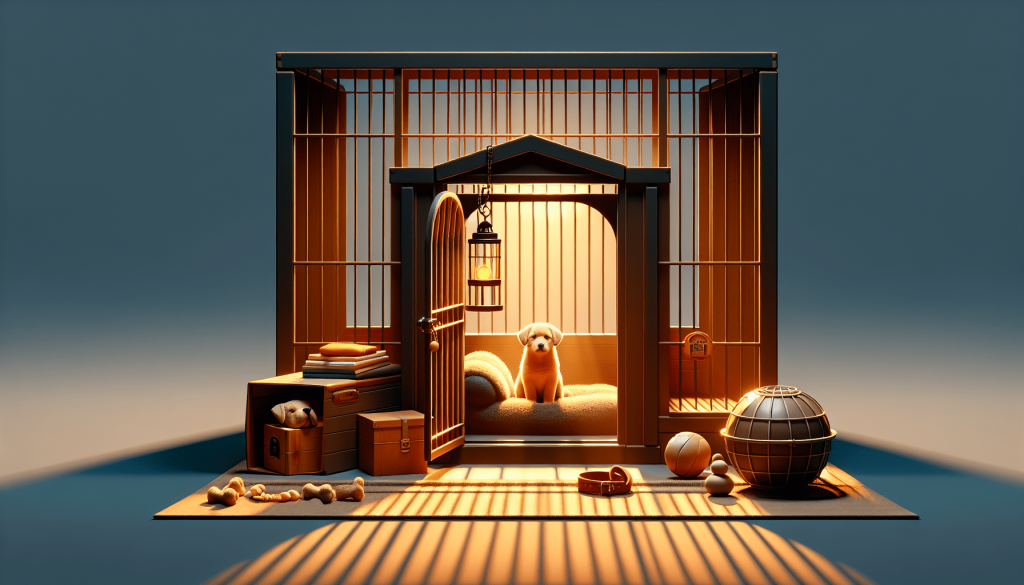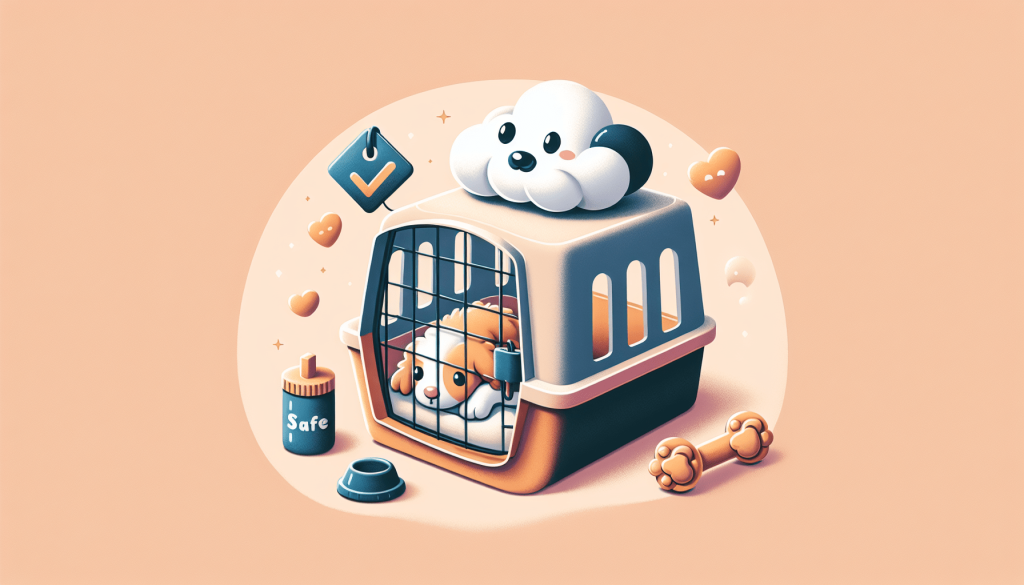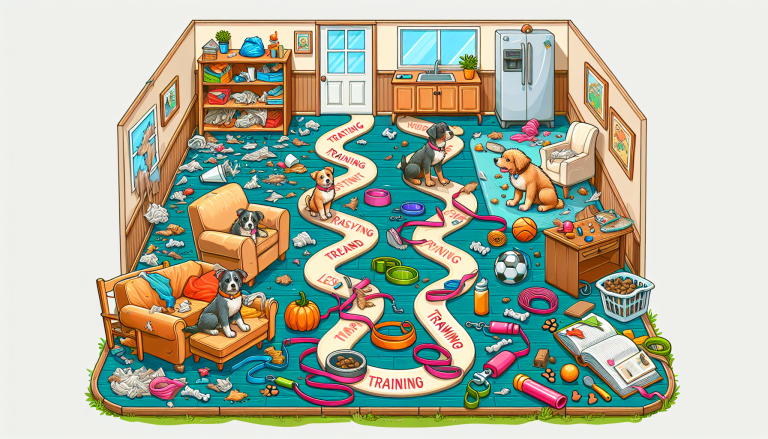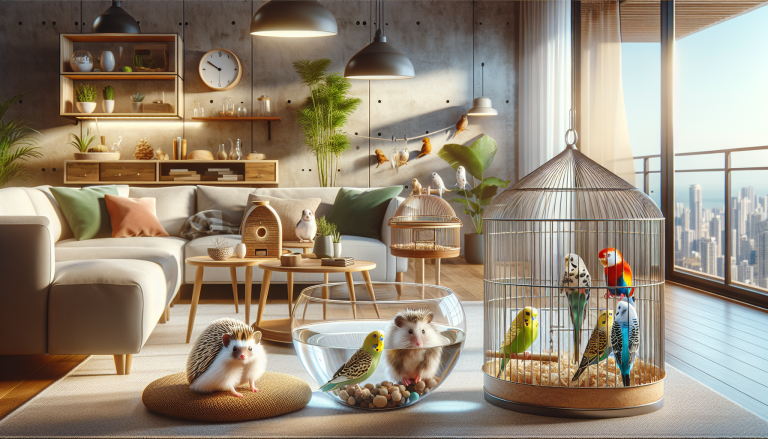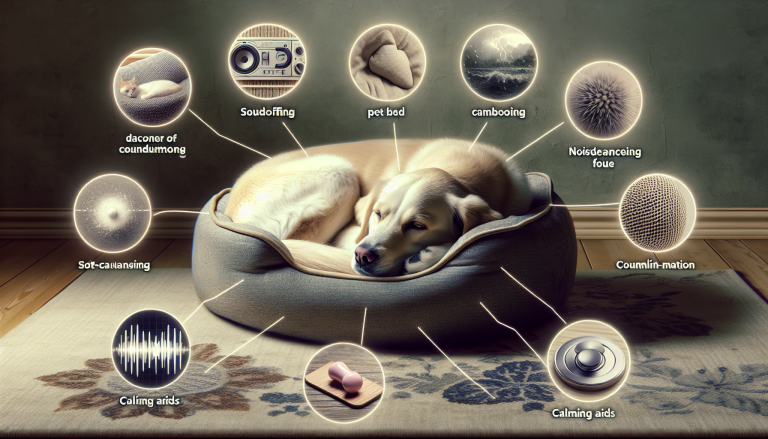Imagine having a well-behaved four-legged friend who feels secure and comfortable spending time in their crate. Whether you have a rambunctious little puppy or an older furry companion, crate training can be a game-changer when it comes to creating a peaceful and obedient household. In this article, we will share some expert tips and tricks to help you master the art of crate training, ensuring that your furry friend sees their crate as their own little safe haven. So, say goodbye to chewed-up furniture and hello to a happy, contented pup!
Table of Contents
ToggleBenefits of Crate Training
Provides a safe space
Crate training provides your dog with a safe and secure space that is entirely their own. It gives them a place where they can retreat to when they need some alone time or when they feel overwhelmed. This safe space can help reduce their anxiety and provide a sense of comfort and security.
Prevents destructive behavior
One of the key benefits of crate training is that it helps prevent destructive behavior. Dogs, especially puppies, can be prone to chewing on furniture, shoes, or other household items. By crate training, you can limit their access to these items when you are unable to supervise them, effectively preventing them from destroying your belongings.
Aids in housebreaking
Crate training is an essential tool for housebreaking your dog. Dogs naturally avoid soiling their sleeping area, so when you crate train them, they learn to hold their bladder until they are let outside. This helps reinforce good bathroom habits and accelerates the housebreaking process.
Reduces stress and anxiety
Many dogs experience stress or anxiety in certain situations, such as during thunderstorms, fireworks, or when left alone. Crate training can help alleviate these feelings by providing a safe and familiar environment for your dog. Being in their crate can help them feel secure and reduce their anxiety levels.
Choosing the Right Crate
Size and space
When choosing a crate for your dog, it is crucial to consider their size and the amount of space they need. The crate should be large enough for your dog to stand up, turn around, and lie down comfortably. However, it should not be too spacious, as excessive space may encourage them to soil one corner and sleep in another.
Material
Crates are available in various materials, including wire, plastic, and fabric. Each material has its advantages and disadvantages. Wire crates are sturdy and provide excellent ventilation, while plastic crates offer more privacy and can be great for traveling. Fabric crates are lightweight and portable but may not be suitable for dogs who tend to chew or scratch.
Accessibility
The crate should have easy access for your dog. It should have a door that can be securely latched but easy for your dog to open when given permission. Make sure the crate door opens smoothly and does not pose any risk of injury to your dog.
Portability
Consider the portability of the crate if you plan to use it for traveling or if you need to move it frequently within your home. Look for collapsible or easily disassembled crates that can be stored or transported with ease.
Introducing the Crate
Make it appealing
To introduce your dog to their crate, make it a positive and appealing space. Place their favorite bedding, toys, and treats inside the crate. Make it cozy and inviting so that your dog will be more willing to explore and spend time in there.
Positive association
Create a positive association with the crate by giving your dog treats or meals inside the crate. Gradually increase the time your dog spends in the crate while enjoying their favorite things. This will help them associate the crate with positive experiences and reinforce the idea that it is a safe and comfortable space.
Gradual introduction
The introduction to the crate should be gradual. Start by leaving the crate door open and let your dog explore the crate at their own pace. Never force your dog into the crate or use it as a form of punishment. Allow them to enter and exit as they please until they become more comfortable being inside.
Patience and consistency
Patience and consistency are essential when crate training your dog. It may take some time for them to adjust to being in the crate, so be patient and provide positive reinforcement. Consistency is also crucial in establishing a routine and helping your dog understand what is expected of them.
Crate Training Schedule
Establish a routine
Establishing a crate training routine will help your dog adapt more quickly to the crate. Set specific times for when your dog enters and exits the crate, and stick to this schedule. Consistency will create predictability and make the training process more effective.
Scheduling meals and potty breaks
Meal and potty breaks should be incorporated into the crate training schedule. Dogs have a natural instinct to avoid soiling their sleeping area, so taking them outside to eliminate before and after crate time will reinforce good bathroom habits and prevent accidents inside the crate.
Gradual increase in crate time
During the early stages of crate training, start with short periods of time and gradually increase the duration. This allows your dog to become comfortable and accustomed to being in the crate for longer periods. It is essential not to rush the process and to be responsive to your dog’s needs.
Balancing crate time with exercise and socialization
While crate training is beneficial, it is crucial to strike a balance between crate time and other activities. Make sure to provide your dog with plenty of exercise, mental stimulation, and socialization outside of the crate. A well-rounded routine will help prevent boredom and promote your dog’s overall well-being.
Positive Reinforcement Techniques
Treats and rewards
Using treats and rewards is a highly effective positive reinforcement technique in crate training. When your dog willingly enters the crate or exhibits desirable behavior, reward them with treats or praise. This positive association will motivate them to continue practicing good crate behavior.
Verbal praise
Verbal praise is another simple yet powerful way to reinforce good crate behavior. Whenever your dog enters the crate, stays quiet, or exhibits calm behavior, praise them with words such as “good boy” or “good girl.” The encouraging tone of your voice will let them know that they are doing the right thing.
Clicker training
Clicker training is a popular positive reinforcement technique that can be used in crate training. By associating the sound of a clicker with rewards, your dog learns to understand that the click signifies good behavior. Clicker training can be especially helpful in shaping specific actions or behaviors related to crate training.
Ignore unwanted behavior
While positive reinforcement is essential, it is equally important to ignore unwanted behavior in the crate. If your dog whines, barks excessively, or displays other unwanted behaviors, it is best to ignore them and only give attention and rewards when they are exhibiting desirable behavior. This will teach them that calm and quiet behavior is rewarded, while undesirable behavior is not.
Avoiding Crate Misuse
Don’t use it for punishment
It is crucial not to use the crate as a form of punishment. Your dog’s crate should always be associated with positive experiences and never seen as a place of confinement or isolation as a form of punishment. This can create negative associations with the crate and hinder the training process.
Avoid excessive crate time
While crate training is beneficial, it is important to avoid excessive crate time. Dogs need social interaction, exercise, and mental stimulation. Leaving your dog in the crate for long periods without breaks can lead to boredom, restlessness, and even behavioral issues. Make sure to provide sufficient time outside the crate for activities and positive interaction.
Avoid using the crate as a babysitter
It can be tempting to rely on the crate as a babysitter to keep your dog confined while you are busy or away. However, it is important to remember that dogs need human interaction and mental stimulation. Leaving them in the crate for extended periods without interaction can lead to loneliness and stress. Balance crate time with quality time spent with your dog to ensure their overall well-being.
Supervise crate time for puppies
If you are crate training a puppy, it is important to supervise their crate time to ensure their safety. Puppies have a higher likelihood of chewing or swallowing objects, so monitoring their behavior while in the crate is crucial. Keep an eye on their toys and bedding, ensuring that there are no safety hazards that could harm them.
Ensuring Comfort and Safety
Comfy bedding
Provide your dog with comfortable bedding inside the crate. Choose bedding materials that are soft, easy to clean, and appropriate for your dog’s size and breed. A cozy bed or blanket will make the crate a more inviting and comfortable space for your dog.
Appropriate temperature
Ensure that the temperature in which the crate is located is comfortable for your dog. Avoid placing the crate in areas that are too hot or too cold, as extreme temperatures can cause discomfort or even harm your dog’s well-being. Consider providing additional bedding or cooling pads during colder or hotter seasons.
Proper ventilation
Good ventilation is essential for your dog’s comfort and safety while in the crate. Make sure that the crate allows for proper airflow, especially during warmer months. This will prevent the crate from becoming stuffy or overheated, ensuring a comfortable environment for your dog.
Secure and sturdy crate
When choosing a crate, prioritize security and durability. Opt for crates that are sturdy and escape-proof, ensuring that your dog remains safe and contained. Regularly check the crate for any loose parts, sharp edges, or other potential hazards that could harm your dog.
Dealing with Whining and Anxiety
Determine the cause
If your dog whines or shows signs of anxiety while in the crate, it is essential to determine the underlying cause. It could be due to separation anxiety, fear, discomfort, or a need to eliminate. Understanding the cause will help you address the issue more effectively.
Gradual desensitization
If your dog experiences anxiety or whines in the crate, gradual desensitization can help. Start by keeping the crate open and allowing your dog to explore and get used to it without any pressure. Slowly increase the duration and close the crate door for short periods while you remain present. Gradually extend the time your dog spends in the crate, always ensuring their comfort and safety.
Provide distractions
To help distract your dog from whining or anxiety in the crate, provide stimulating toys or puzzles. Interactive toys, stuffed Kongs, or treat-dispensing toys can keep your dog occupied and focused on something positive while in the crate. This can help reduce anxiety and boredom.
Consult a professional if needed
If your dog’s whining or anxiety persists or worsens despite your efforts, it may be beneficial to consult a professional dog trainer or behaviorist. They can provide expert guidance, identify the underlying cause of the behavior, and develop a customized training plan to address the specific needs of your dog.
Troubleshooting Common Issues
Accidents in the crate
If your dog has accidents in the crate, it could indicate that they are not fully housebroken or that they are spending too much time in the crate without breaks. Revisit the crate training schedule and ensure that your dog has ample opportunities to eliminate and empty their bladder before being crated. Gradually increase the time spent in the crate, always balancing it with regular potty breaks.
Excessive barking
Excessive barking in the crate may be a sign of anxiety, boredom, or a need for attention. Ensure that your dog has sufficient exercise and mental stimulation outside of the crate. Address any underlying anxiety or fear issues and provide distractions, such as interactive toys or calming treats, to help redirect their focus.
Escape attempts
Some dogs may try to escape from the crate, especially during the initial stages of training. If this occurs, ensure that the crate is secure and free from any weaknesses or loose parts that your dog can exploit. Make the crate a positive and inviting space by using treats and positive reinforcement techniques. Consider seeking professional advice for escape-prone dogs to ensure the safety of your pet.
Fear or aversion towards the crate
If your dog displays fear or aversion towards the crate, it is crucial to address their concerns with patience and positive reinforcement. Take a step back in the training process, ensuring the crate remains open and accessible for your dog to explore at their own pace. Gradually reintroduce positive associations, such as treats or meals inside the crate, to help your dog overcome their fear or aversion.
Gradual Transition to Unsupervised Time
Monitor progress
As your dog becomes more comfortable and reliable in the crate, you can gradually transition to unsupervised time. Start by leaving your dog in the crate for short periods while you are home, gradually increasing the duration. Monitor their behavior and progress during these periods to ensure that they are ready for longer periods of unsupervised time.
Gradually increase freedom
Once your dog demonstrates good behavior and reliability in the crate, you can start giving them supervised freedom outside of the crate in designated areas of your home. This can be done using baby gates or playpens to limit access to certain rooms. Gradually increase their freedom around the house as they continue to exhibit good behavior.
Use baby gates or playpens
Baby gates or playpens can be helpful tools when transitioning from crate time to unsupervised time. These barriers can prevent your dog from wandering into areas that are off-limits or potentially hazardous. It allows them to have more freedom and explore their surroundings while still providing boundaries for their own safety.
Ensure readiness before leaving them alone
Before leaving your dog alone without the crate, ensure that they are fully ready for this level of independence. Monitor their behavior, bathroom habits, and overall reliability. Make sure they have ample opportunities for exercise, mental stimulation, and potty breaks before leaving them alone for extended periods. Gradually increase the time they spend alone to prevent anxiety or stress.
Crate training is a valuable tool for both puppies and adult dogs. It provides numerous benefits, including a safe space, prevention of destructive behavior, aid in housebreaking, and reduction of stress and anxiety. By choosing the right crate, introducing it gradually, establishing a training schedule, using positive reinforcement techniques, avoiding crate misuse, ensuring comfort and safety, addressing whining and anxiety, troubleshooting common issues, and gradually transitioning to unsupervised time, you can create a positive and effective crate training experience for your dog. Remember to approach the process with patience, consistency, and a friendly tone, building a strong bond between you and your furry friend.

